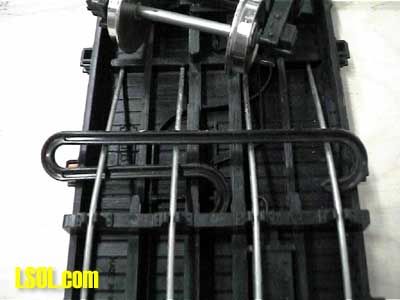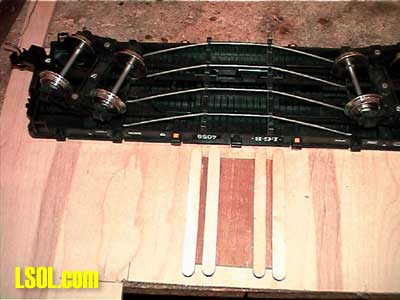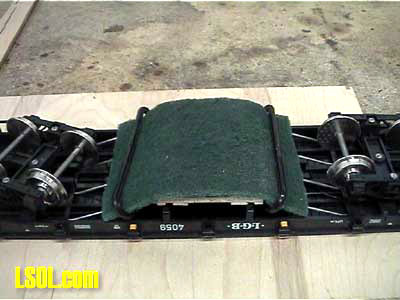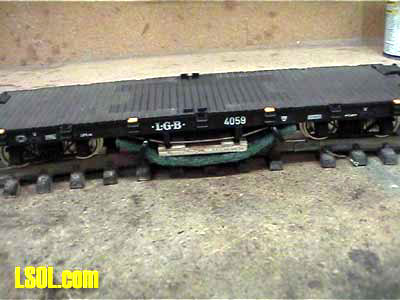Track & Bridges
Use Your Socks to Clean the Track!
Feb 16, 2005


By Todd Brody |
Author
Bio
Until the other day when I was buying socks of all things....
|
The commonly available methods of abrasive track cleaning (e.g., drywall screen, abrasive pad, etc.) do a good job of polishing the rails, but they leave a residue. Additionally, a few passes of the latest consist over the clean rails and you have a new layer of oxides to contend with. Finally, moisture build-up can impede wheel pick-up performance. All issues I set out to conquer. I wanted this to be simple. A Scotchbrite pad that would ride along the bottom of a rail car and skim the rails would do the job. And, it would be nice if the Scotchbrite could be quickly changed out for a sponge. Looking through the arsenal of rail cars, I figured that a car with solid truss-rods would work best. I came across an unused LGB 4059 flatcar on the shelf. This truss rods on this were over-scale and very solid. It seemed that it would be very easy to obtain or make a clip out of brass rod that could attach the Scotchbrite pad to the truss rods. A perusal of my depleted brass stock put a damper on the project and it went on the back burner... Until the other day when I was buying socks of all things. When I got them home and took the socks off their "hangers," I noticed that these hangers could offer the perfect solution to clip the pads to the truss rods. I've seen similar hangers on neck ties. I instantly went to work.
The flatcar was prepared by changing out the plastic wheels for metal wheels and the couplers were replaced with Kadees. The sock "hangers" 
had to have a small portion of the hook removed to clear the beams along the bottom of the rail car. 
You can see here the "hanger" in position on the truss rods.
Next, a wooden pad was fabricated that would place the Scotchbrite pad at the right height above the rails and ensure a good contact. The wooden pad is 1/8" plywood approximately 3-1/3" wide by 2-3/4" wide. These latter dimensions aren't critical. Four "craft sticks" (popsicle sticks) are used to locate the wooden pad on the bottom of the flatcar and keep it from moving out of place. The sticks are arranged such that they frame the wooden pad around the truss rod mounts. 
The sticks were then sanded down. 
The wooden pad is laid in place and the Scotchbrite pad is installed under the hangers. 

The hangers are perfectly sized for the Scotchbrite pads and do a good job of securing them in place. The tension of the Scotchbrite pad then holds the wooden pad in place. Because the hangers are of plastic, there is no chance that they an cause a short circuit. The flatcar has not performed any active MOW, but preliminary tests look promising. That will have to wait until spring. Top of Page
|



